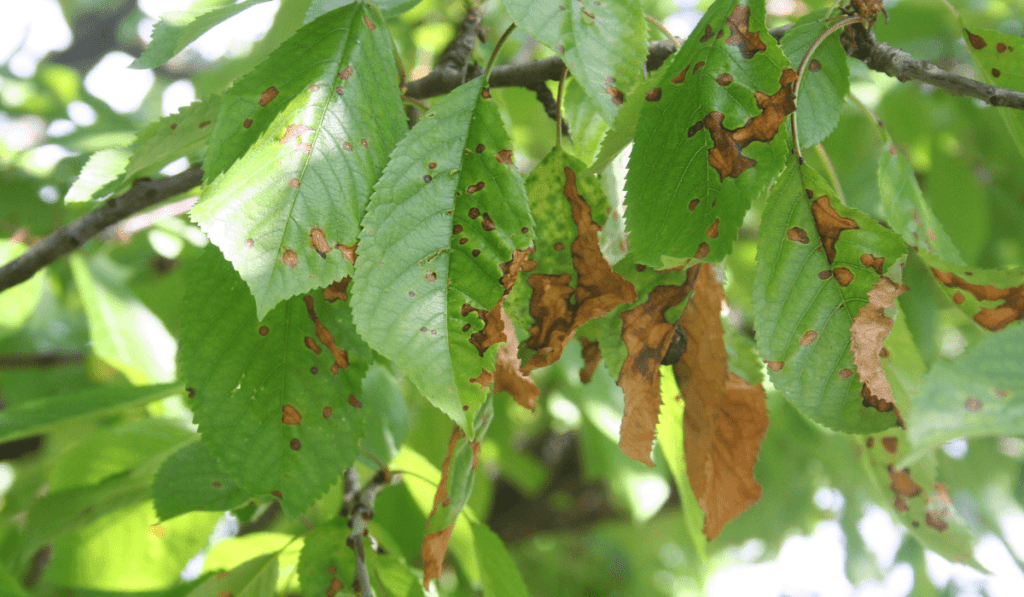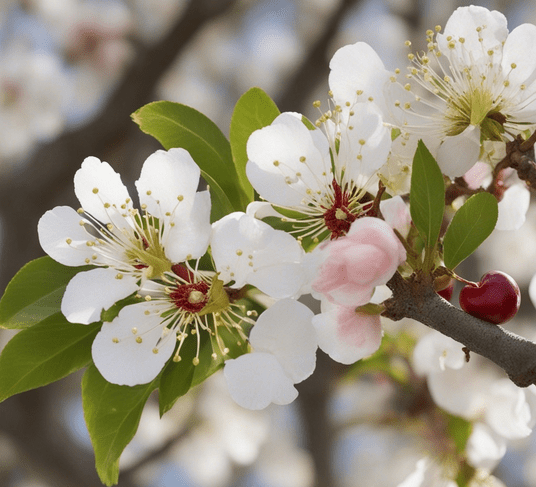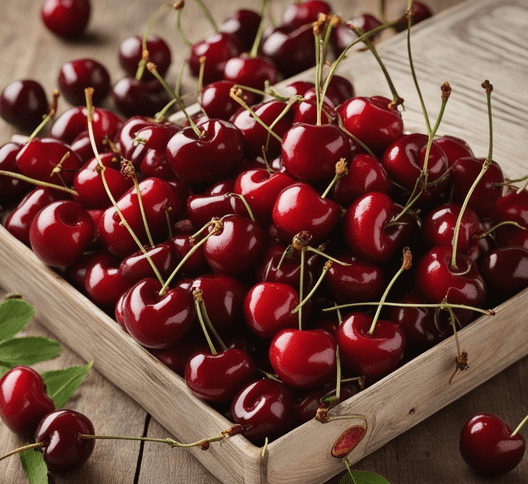Cherry trees, though resilient, face an array of pests that can compromise their health and productivity. Understanding the characteristics and behaviors of these common pests is the first step toward effective pest management.
1. Aphids
Identification: Aphids are small, soft-bodied insects, often pear-shaped, and come in various colors. They tend to cluster on the undersides of leaves.
Damage: Aphids feed on cherry tree sap, causing curled leaves, distorted growth, and a sticky substance called honeydew, which can attract other pests.
Prevention and Treatment: Natural predators like ladybugs and lacewings help control aphid populations. Introducing beneficial insects and using organic methods like neem oil can also be effective.
2. Cherry Fruit Fly
Description: Cherry fruit flies are small insects with distinctive markings. They lay eggs on developing fruit.
Signs of Infestation: Tiny puncture wounds on cherries indicate fruit fly infestation. Larvae feed on the fruit flesh, leading to premature fruit drop.
Management Strategies: Hanging traps with bait, such as ammonium bait stations, helps monitor and control fruit fly populations. Chemical control can be considered, but it’s crucial to follow guidelines.
3. Tent Caterpillars
Identification: Tent caterpillars are fuzzy and black with a white stripe down the back. They create silk tents in the crotches of branches.
Damage: These caterpillars feed on leaves, causing defoliation and weakening the tree.
Control Measures: Manual removal of tents, encouraging natural predators like birds, and applying insecticides if necessary can help manage tent caterpillar populations.
4. Scale Insects
Types of Scale Insects: Various scale species affect cherry trees, appearing as small, shell-like bumps on branches.
Symptoms: Scale insects weaken trees by feeding on sap. Signs include yellowing leaves, stunted growth, and the presence of sticky honeydew.
Treatment: Regularly inspect trees for scale. Horticultural oils or insecticidal soaps can be effective in controlling scale populations.
5. Japanese Beetles
Appearance: Metallic green with bronze wings, Japanese beetles are easily identifiable.
Feeding Habits: These beetles skeletonize cherry leaves, causing severe damage.
Management: Traps, handpicking, and introducing nematodes or milky spore for biological control can help manage Japanese beetle populations.
6. Spider Mites
Identifying Spider Mites: These tiny arachnids cause stippling on leaves, giving them a speckled appearance.
Environmental Factors: Hot and dry conditions favor spider mite infestations.
Mitigation Strategies: Increasing humidity, using insecticidal soap, and introducing predatory mites can help control spider mite populations.
7. Cherry Bark Tortrix
Overview: Cherry bark tortrix larvae feed on developing buds and leaves.
Signs of Infestation: Rolled leaves and frass within the rolled leaves indicate cherry bark tortrix presence.
Control Measures: Encouraging natural predators and maintaining tree health through proper care are key to managing cherry bark tortrix.
Understanding these common cherry tree pests empowers growers to implement targeted and effective pest management strategies. In the next section, we’ll explore general tips to promote the overall health of cherry trees and prevent pest infestations.
Section 3: Prevention and Integrated Pest Management (IPM)
Effective pest management begins with proactive measures to prevent infestations and address issues promptly. Integrated Pest Management (IPM) combines various strategies for a holistic and sustainable approach to pest control.
3.1 Importance of Early Detection and Prevention: Early detection is a cornerstone of successful pest management. Regularly inspect your cherry trees for signs of pests, such as unusual leaf damage, discoloration, or the presence of pests themselves. Swift action at the first sign of trouble can prevent minor issues from escalating.
3.2 Overview of Integrated Pest Management Strategies: Integrated Pest Management (IPM) is a comprehensive and environmentally sensitive approach to pest control. It involves a combination of cultural, biological, mechanical, and chemical control methods. For cherry trees, this might include introducing beneficial insects, using traps, employing natural predators, and judiciously applying pesticides when necessary.
3.3 Tips for Creating a Pest-Resistant Environment:
- Plant Diversity: Cultivate a diverse garden with various plant species to create a balanced ecosystem that supports natural predators of pests.
- Healthy Soil: Ensure your soil is nutrient-rich and well-draining, as healthy trees are more resilient to pest infestations.
- Pruning Practices: Proper pruning promotes good air circulation, reducing the risk of fungal diseases and making the environment less favorable for certain pests.
- Watering Techniques: Water the soil, not the foliage, to discourage pests that thrive in humid conditions.
Conclusion
We’ve explored various pests that can impact cherry trees, from aphids and fruit flies to tent caterpillars and scale insects. Recognizing these pests and understanding their life cycles is vital for effective management.
Taking proactive steps to prevent pest issues is more effective than dealing with infestations after they occur. Implement the tips and strategies discussed to keep your cherry trees healthy and vibrant.
Remember, a thriving cherry tree not only enhances the aesthetics of your landscape but also contributes to the overall well-being of your garden. By adopting preventive measures and staying vigilant, you ensure that your cherry trees remain resilient against potential threats, allowing you to enjoy their beauty and harvest for years to come.



